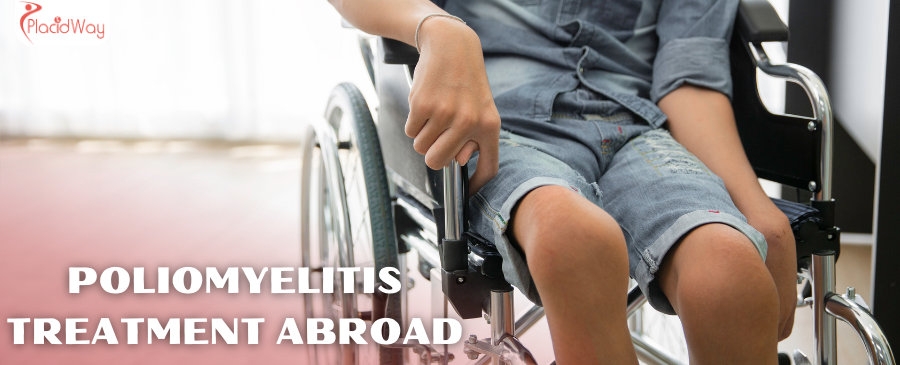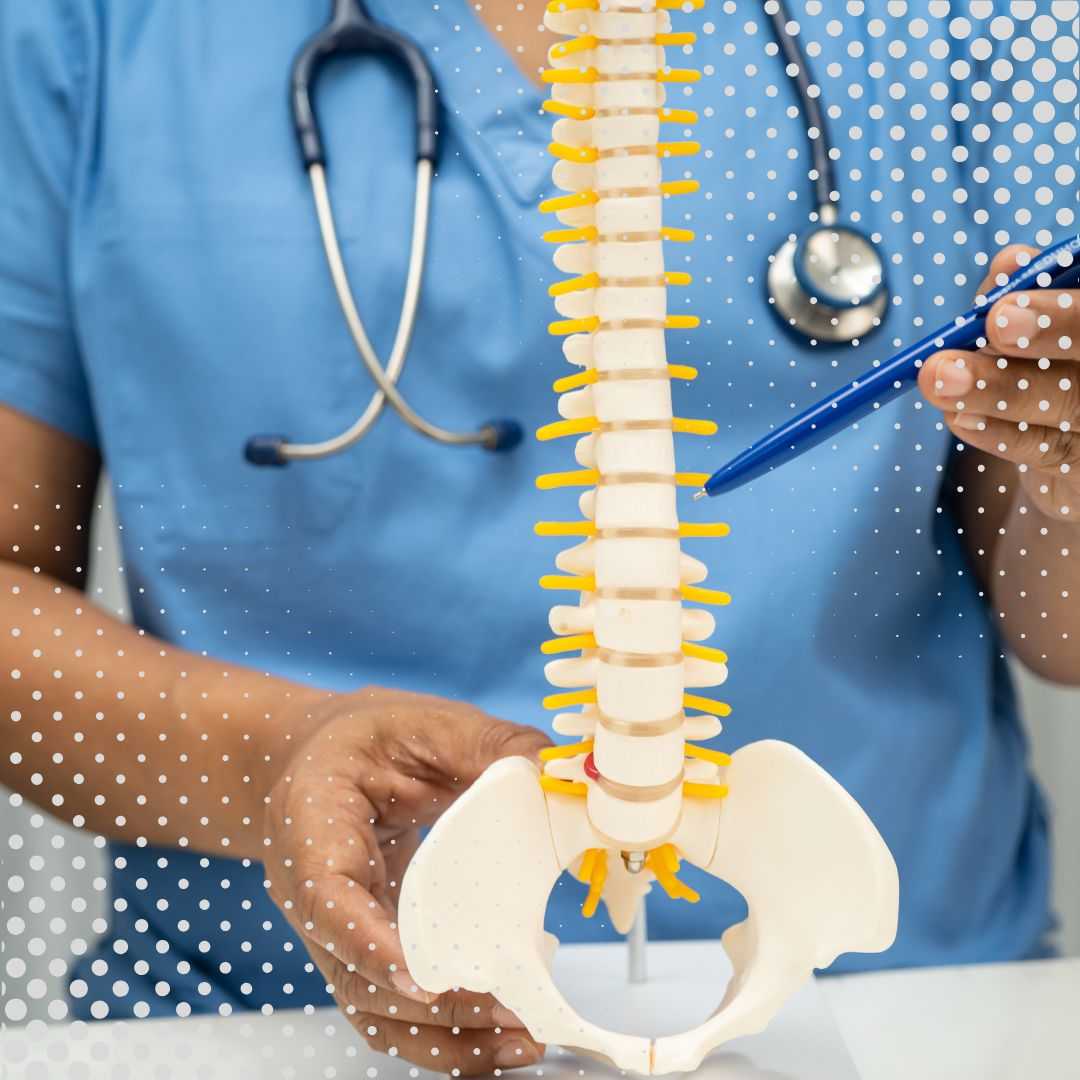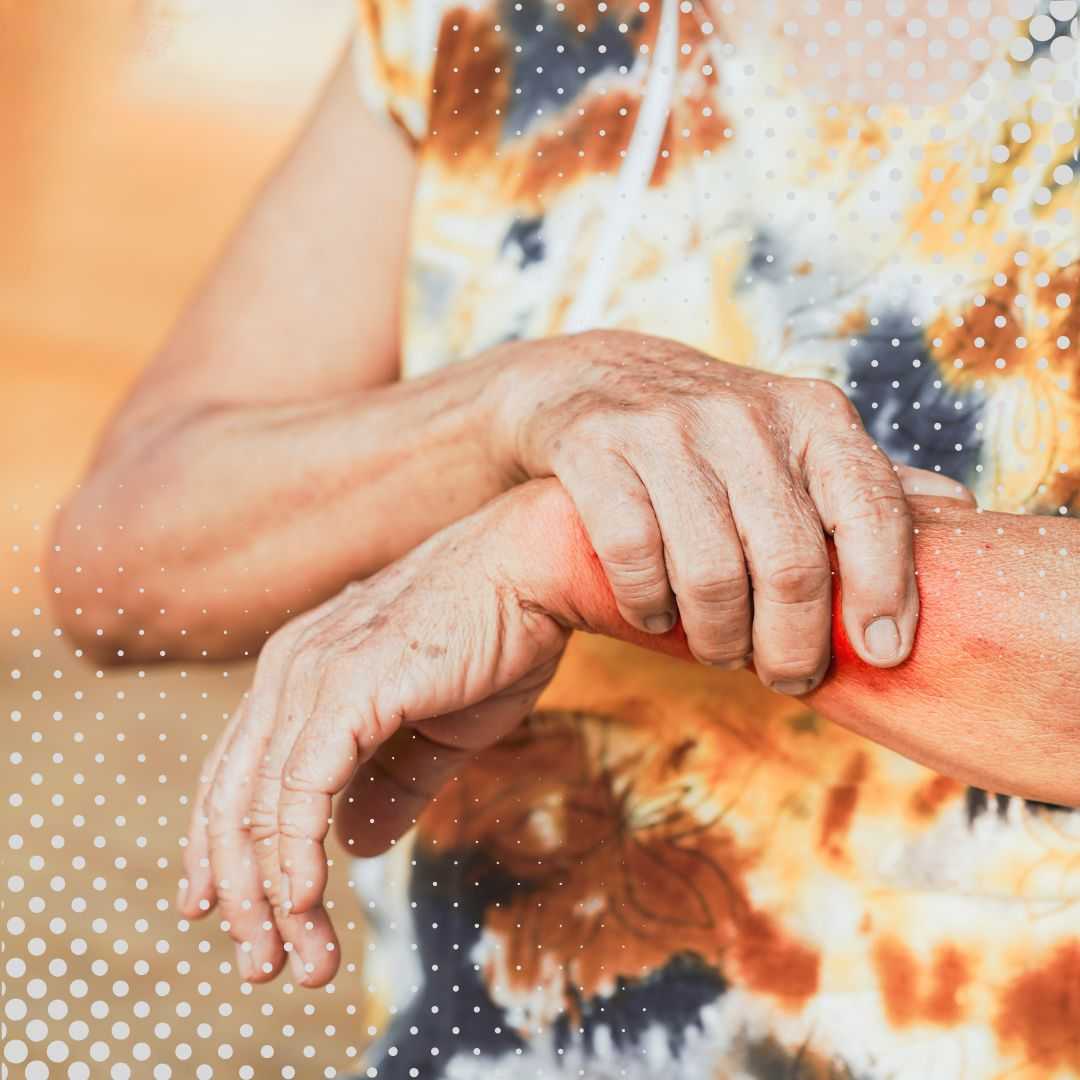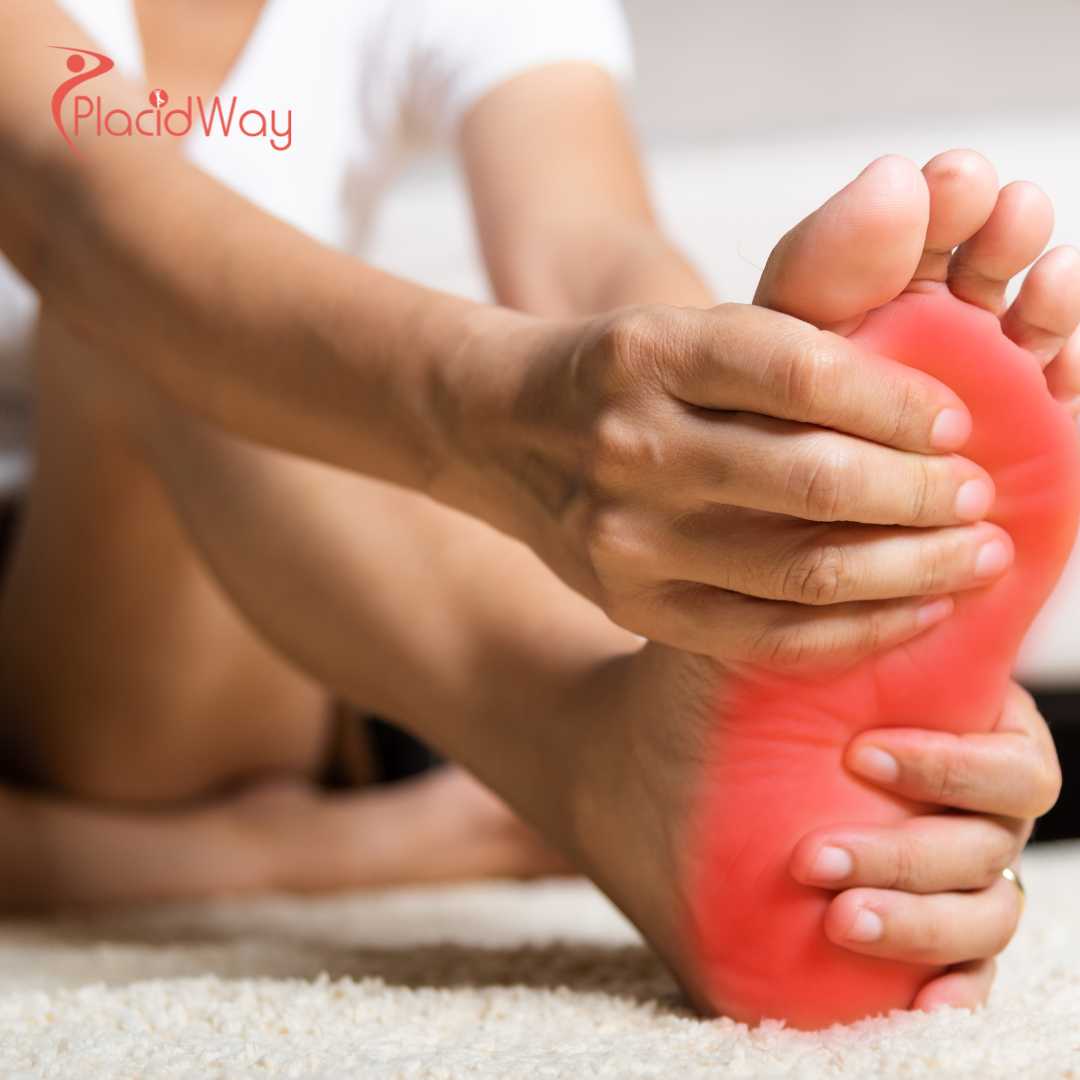
Navigating Life After Polio: Understanding Post-Polio Syndrome & Global Rehabilitation
Poliomyelitis, commonly known as polio, is a highly infectious viral disease that, while largely eradicated through widespread vaccination, has left a lasting impact on millions globally. For many who survived the initial paralytic infection, a new challenge can emerge decades later: Post-Polio Syndrome (PPS). This condition brings a resurgence of symptoms such as muscle weakness, debilitating fatigue, and pain, significantly impacting daily life. If you're searching for "post-polio syndrome treatment options," "polio rehabilitation programs," or "how to manage post-polio symptoms," you're not alone.
Living with PPS can be a journey of adapting to new limitations, but specialized care and rehabilitation can make a profound difference. Many individuals find themselves exploring options beyond their local healthcare systems, seeking "advanced post-polio care abroad" or "affordable rehabilitation for polio survivors." Medical tourism offers a beacon of hope, connecting patients with expert facilities and innovative treatments designed to enhance strength, reduce pain, and improve overall quality of life. This guide will delve deep into Post-Polio Syndrome, its symptoms, causes, available treatments, and why pursuing rehabilitation abroad might be the right choice for you.
What are the common symptoms of Post-Polio Syndrome (PPS)?
Post-Polio Syndrome manifests differently in individuals, but several key symptoms are widely reported. These usually appear 15 to 40 years after the initial acute paralytic polio infection and involve muscles previously affected, as well as those that seemingly recovered completely. Understanding these signs is crucial for early diagnosis and effective management. Patients often search for "post-polio fatigue," "muscle weakness after polio," or "joint pain post-polio."
- New or Increased Muscle Weakness: This is often the most debilitating symptom, affecting muscles previously involved in the initial polio attack, or even those that seemed unaffected. It can lead to difficulties with daily activities like walking, climbing stairs, or lifting objects.
- Overwhelming Fatigue: Many PPS sufferers describe a profound, generalized fatigue that is not relieved by rest. It's often disproportionate to activity levels and can significantly impact energy and concentration.
- Muscle and Joint Pain: Chronic pain, often in the muscles and joints, is common. It can be due to new muscle weakness, overuse of unaffected muscles, or skeletal deformities.
- Breathing and Swallowing Difficulties: Weakness in respiratory muscles can lead to shortness of breath, sleep apnea, and increased risk of pneumonia. Swallowing problems (dysphagia) can also occur.
- Cold Intolerance: Many individuals with PPS report an increased sensitivity to cold temperatures.
- Muscle Atrophy: Further wasting of muscle tissue can occur in affected limbs.
What causes Post-Polio Syndrome and who is at risk?
The exact mechanisms of PPS are still being researched, but the leading theory centers around the damage and subsequent repair of motor neurons during the initial polio infection. Polio attacks motor neurons in the spinal cord. While some are destroyed, others survive and sprout new nerve endings to reinnervate orphaned muscle fibers, compensating for the loss.
Decades later, these "giant" motor units, which work harder than normal, may begin to fail. This leads to the degeneration of the nerve endings, resulting in new muscle weakness and fatigue. It's essentially an "overuse" or "wear and tear" phenomenon on an already compromised neuromuscular system. People searching for "causes of post-polio syndrome" or "risk factors for PPS" often seek clarity on why these symptoms appear so late.
Risk factors for developing PPS include:
- Severity of Initial Polio: Those who experienced more severe initial paralytic polio are at higher risk.
- Age at Onset of Polio: Individuals who contracted polio at an older age tend to have a higher risk of developing PPS.
- Degree of Initial Recovery: Paradoxically, those who experienced significant recovery after acute polio may be more susceptible because their remaining motor neurons had to work harder to compensate.
- Gender: Some studies suggest women may be at slightly higher risk.
- Physical Activity Level: While not a direct cause, over-exercising or excessive physical demands over years can contribute to the "wear and tear."
What types of treatments and rehabilitation are available for Post-Polio Syndrome?
There is currently no cure for Post-Polio Syndrome, but a wide range of treatments and rehabilitation strategies can effectively manage symptoms, improve functional ability, and enhance quality of life. The focus is on conservative management, preserving existing function, and preventing further deterioration. Patients often look for "post-polio syndrome physical therapy," "pain management post-polio," or "polio rehabilitation exercises."
- Physical Therapy: Emphasizes gentle, non-fatiguing exercises to maintain existing muscle strength and flexibility. Water therapy (hydrotherapy) is often beneficial. Patients learn energy conservation techniques and safe movement patterns.
- Occupational Therapy: Helps individuals adapt their daily activities and environments to conserve energy and maximize independence. This might include recommending assistive devices, home modifications, and strategies for simplifying tasks.
- Speech and Swallowing Therapy: For those with breathing or swallowing difficulties, therapists can teach techniques to improve respiratory function and safe swallowing.
- Pain Management: Medications (NSAIDs, muscle relaxants, neuropathic pain drugs), heat/cold therapy, massage, and acupuncture can help alleviate muscle and joint pain.
- Mobility Aids: Braces, crutches, walkers, or wheelchairs can reduce the load on weakened muscles and prevent overuse, helping to conserve energy.
- Lifestyle Adjustments: Essential for managing fatigue, including pacing activities, adequate rest, and avoiding overexertion. Maintaining a healthy weight is also important.
- Nutritional Counseling: To ensure adequate energy levels and overall health.
Who is eligible for Post-Polio Syndrome rehabilitation programs?
Not everyone who had polio develops PPS, and eligibility for specialized rehabilitation programs is based on specific diagnostic criteria. These criteria help ensure that the treatment plan is appropriate for the patient's condition. People seeking "post-polio syndrome diagnosis" or "eligible for polio rehab" need to understand these requirements.
General eligibility criteria include:
- Prior History of Paralytic Polio: A documented history of acute poliomyelitis with residual weakness. This means you must have had paralytic polio, not just the non-paralytic form.
- Period of Neurological Recovery: A period of partial or complete recovery from the acute episode, followed by a stable neurological interval of at least 10-15 years (though often much longer).
- New Onset of Symptoms: The development of new or worsening muscle weakness, abnormal fatigue, or muscle pain that persists for at least a year and cannot be attributed to other medical conditions.
- Exclusion of Other Conditions: Other neurological, orthopedic, or medical conditions that could explain the new symptoms must be ruled out.
A comprehensive neurological evaluation by a specialist experienced in neuromuscular disorders is essential for an accurate diagnosis and to determine eligibility for tailored rehabilitation.
What is the typical recovery time and what expectations should patients have?
It's crucial for patients and their families to understand that Post-Polio Syndrome rehabilitation is about managing a chronic, often slowly progressive condition, rather than achieving a "cure" or full recovery. The goal is to maximize current function, prevent further decline, and enhance quality of life. Many search for "post-polio prognosis" or "living with post-polio syndrome" to set realistic expectations.
- No "Cure" or Full Recovery: PPS symptoms are generally progressive, though often very slowly. Rehabilitation aims to slow this progression and help patients adapt.
- Ongoing Management: Rehabilitation is not a one-time event but an ongoing process involving lifestyle adjustments, regular therapy, and symptom monitoring.
- Improved Function and Pain Reduction: Realistic expectations include improvements in managing fatigue, reduced pain, increased functional independence, and maintaining existing strength.
- Pacing and Energy Conservation: A key outcome is learning to pace activities and conserve energy, which can significantly improve daily well-being.
- Individualized Progress: Progress varies greatly among individuals. Some may see significant improvements in specific areas, while others focus on maintaining current abilities.
A positive mindset, adherence to the treatment plan, and active participation in therapy are vital for achieving the best possible outcomes.
What are the potential risks and side effects of Post-Polio Syndrome treatments?
While PPS treatments are generally conservative and aimed at improving well-being, there are potential risks and side effects, primarily related to physical activity and medication. Patients looking for "risks of post-polio therapy" or "side effects of PPS medication" should be aware.
- Over-Exertion/Overuse: The biggest risk in physical therapy is pushing too hard. Overuse of weakened muscles can lead to further damage, increased pain, and worsened fatigue. This is why gentle, supervised, and energy-conserving exercises are paramount.
- Medication Side Effects: Pain management medications (e.g., NSAIDs, muscle relaxants, antidepressants for neuropathic pain) can have side effects such as gastrointestinal upset, drowsiness, dizziness, or liver/kidney issues.
- Dependency on Mobility Aids: While helpful, over-reliance on aids without proper instruction can sometimes hinder the use of existing muscle function.
- Psychological Impact: Adapting to a progressive condition and making significant lifestyle changes can lead to frustration, anxiety, or depression. Psychological support is often a crucial part of holistic care.
Working closely with experienced therapists and doctors who understand PPS is critical to minimize risks and maximize benefits.
How do Post-Polio Syndrome treatment costs compare worldwide?
The cost of Post-Polio Syndrome rehabilitation can be a major factor for many patients, leading them to search for "cost of post-polio rehabilitation" or "affordable polio treatment abroad." The expenses can vary widely depending on the country, the clinic's reputation, the duration and intensity of the program, and the specific therapies included.
| Region/Country | Estimated Cost Range (Per Week/Month for intensive rehab)* | Notes |
|---|---|---|
| USA / Canada | $5,000 - $15,000+ per week | Very high cost, especially without insurance coverage. State-of-the-art facilities. |
| Western Europe (e.g., UK, Germany) | $3,000 - $10,000+ per week | High costs, similar quality to USA but can be slightly less. |
| India | $1,500 - $4,000 per month | Excellent value, highly skilled professionals, comprehensive programs. |
| Thailand | $2,000 - $5,000 per month | Renowned for medical tourism, high-quality care with attractive packages. |
| Mexico | $1,800 - $4,500 per month | Proximity to North America, good value, growing medical tourism sector. |
| Eastern Europe (e.g., Poland, Czech Republic) | $1,000 - $3,500 per month | Emerging destinations with good facilities and lower living costs. |
*Note: These are estimated ranges and can vary significantly based on the specific clinic, intensity of therapy, duration, and included amenities (e.g., accommodation, meals). Always request a personalized quote.
Why consider Post-Polio Syndrome rehabilitation abroad?
For many individuals living with PPS, seeking treatment abroad isn't just an option; it's a strategic choice to access better care, affordability, or a more comprehensive approach. People search for "medical tourism for post-polio" or "best countries for polio rehab" for compelling reasons:
- Cost Savings: As seen in the table above, the cost of specialized rehabilitation can be significantly lower in certain countries compared to Western nations, making long-term or intensive programs more accessible.
- Access to Specialized Expertise: Some international clinics specialize in neuromuscular disorders and offer integrated, multidisciplinary teams highly experienced in PPS management, which might not be readily available at home.
- Shorter Waiting Times: In countries with universal healthcare or high demand, waiting lists for specialized rehabilitation can be long. Medical tourism often offers immediate access to care.
- Personalized and Intensive Programs: Many international facilities provide highly personalized, intensive rehabilitation programs tailored to individual needs, often including a broader range of therapies (e.g., hydrotherapy, acupuncture, yoga) than might be standard in other regions.
- Holistic Approach: Beyond physical therapy, many overseas clinics offer a holistic approach, integrating psychological support, nutritional guidance, and wellness activities.
- Privacy and Anonymity: Some patients prefer to seek treatment away from their home environment for privacy.
Which countries offer the best value for Post-Polio Syndrome care?
When searching for "affordable post-polio care" or "top medical tourism destinations for rehabilitation," several countries consistently emerge as leaders due to their combination of quality, affordability, and patient-centric services:
- India: Known for its highly skilled medical professionals, state-of-the-art hospitals, and comprehensive rehabilitation centers. Costs are significantly lower than in many Western countries, and English is widely spoken in medical settings.
- Thailand: A long-standing medical tourism hub, Thailand boasts world-class facilities, excellent patient care, and a reputation for hospitality. They offer a range of specialized rehabilitation programs at competitive prices.
- Mexico: Particularly attractive for North American patients due to its proximity. Mexico has developed a strong medical tourism infrastructure, offering quality care from board-certified physicians at a fraction of US costs.
- Turkey: An emerging destination, Turkey offers modern hospitals, skilled medical staff, and competitive pricing for various treatments, including rehabilitation.
- Eastern Europe (e.g., Poland, Czech Republic): These countries are gaining recognition for their quality healthcare, well-trained specialists, and considerably lower costs for medical and rehabilitation services.
When selecting a destination, research accredited facilities, physician credentials, and read patient testimonials to ensure both value and quality.
What to expect when traveling for this procedure?
Embarking on a medical journey abroad for Post-Polio Syndrome rehabilitation requires careful planning and preparation. For those searching "traveling for medical treatment" or "medical tourism logistics," here's what you can generally expect:
- Initial Consultation & Planning: You'll typically start with a remote consultation, sharing your medical history, diagnosis, and current symptoms. The chosen clinic will propose a personalized treatment plan and cost estimate. A medical tourism facilitator like PlacidWay can streamline this process.
- Travel Arrangements: This includes booking flights, securing necessary visas, and arranging accommodation (often provided or recommended by the clinic/facilitator, especially for longer stays). Consider accessibility needs for travel.
- Medical Records Transfer: Ensure all relevant medical documents, imaging, and test results are securely transferred to the international clinic.
- Arrival and Assessment: Upon arrival, you'll undergo a thorough in-person assessment by the medical team to finalize your rehabilitation plan.
- Rehabilitation Program: The core of your visit will be the daily therapy sessions, which can be intensive and tailored to your specific needs.
- Accommodation and Support: Many facilities offer on-site or nearby accommodation suitable for patients with mobility challenges. Translators are often available if there's a language barrier.
- Follow-up Care: Before returning home, you'll receive guidance on continuing your rehabilitation, and a follow-up plan will be established.
Having a companion travel with you can provide invaluable support, especially during an intensive rehabilitation period.
How to ensure safety and quality abroad?
Safety and quality are paramount when seeking medical care in another country. Patients researching "safe medical tourism" or "accredited clinics abroad" should prioritize these factors:
- Accreditation: Look for international accreditations such as Joint Commission International (JCI), which signifies adherence to global healthcare standards. Local accreditations are also important.
- Physician Credentials: Verify that the doctors, therapists, and medical staff are board-certified, highly experienced in PPS, and have relevant qualifications from recognized institutions.
- Facility Standards: Ensure the clinic or hospital is modern, well-equipped, and maintains high hygiene standards.
- Transparent Pricing: A reputable provider will offer a clear, all-inclusive quote without hidden fees.
- Comprehensive Treatment Plan: The clinic should provide a detailed, individualized treatment plan, explaining the therapies, expected duration, and potential outcomes.
- Patient Testimonials and Reviews: Seek out feedback from previous patients who have undergone similar treatments at the facility.
- Use a Reputable Facilitator: Companies like PlacidWay specialize in vetting international healthcare providers, coordinating logistics, and providing support throughout your medical journey, significantly reducing risks.
What are patient success stories from Post-Polio Syndrome treatment abroad?
While individual outcomes vary, many patients who have sought Post-Polio Syndrome treatment abroad share inspiring stories of renewed hope and improved function. These "post-polio success stories" and "patient testimonials abroad" highlight the transformative potential of specialized care.
For example, a patient from the USA struggling with severe fatigue and new leg weakness found renewed strength and learned effective energy conservation techniques at a clinic in India, allowing her to resume gardening, a beloved hobby. Another individual from the UK, experiencing increasing joint pain and limited mobility, traveled to Thailand for an intensive program that combined physical therapy, hydrotherapy, and acupuncture, leading to a significant reduction in pain and improved balance. These success stories often underscore:
- Improved Mobility: Gaining better control over weakened muscles, often with the help of assistive devices and targeted exercises.
- Reduced Pain: Effective pain management strategies leading to a notable decrease in chronic muscle and joint discomfort.
- Enhanced Energy Levels: Learning energy conservation techniques and receiving supportive therapies that help combat debilitating fatigue.
- Greater Independence: Regaining the ability to perform daily tasks with less effort and more confidence.
- Better Quality of Life: Overall improvements in well-being, mood, and engagement in activities they once enjoyed.
These experiences demonstrate that while PPS is a lifelong condition, specialized and intensive rehabilitation, particularly in environments focused on holistic care, can empower individuals to live more fulfilling and active lives.
Take the Next Step with PlacidWay
Ready to explore treatment options abroad? Discover top clinics, compare prices, and get a free quote tailored to your needs with PlacidWay.
Best Neurology Treatment Center | Cheap Neurology Treatment Packages










Share this listing